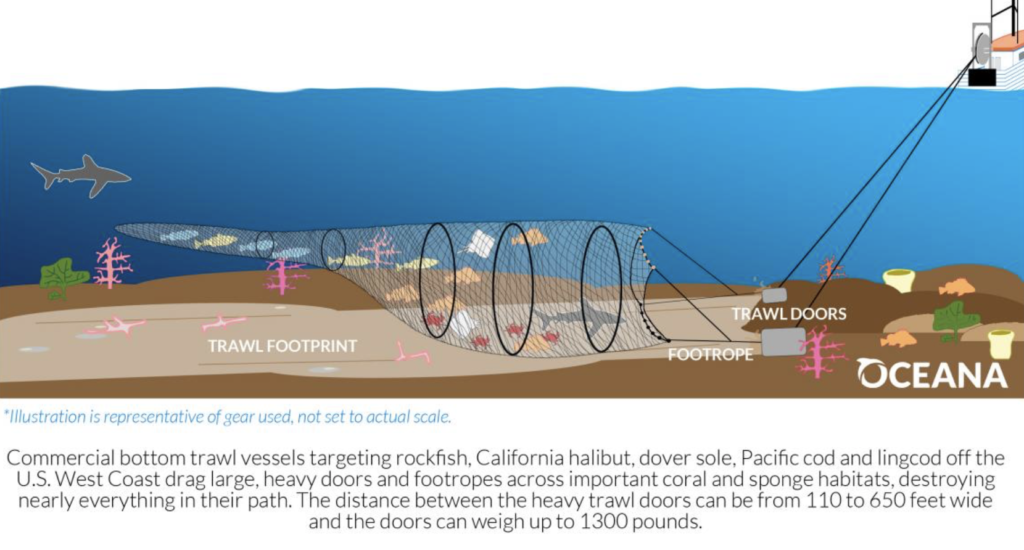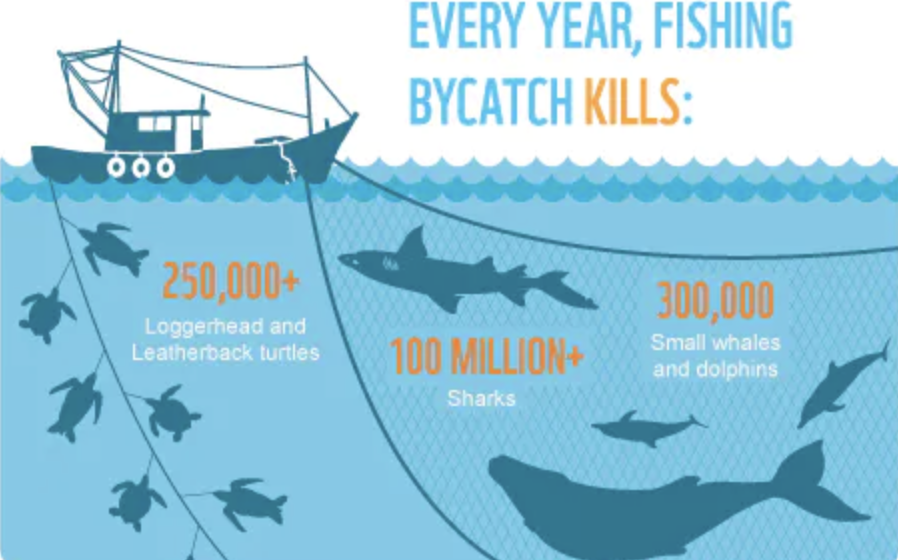Bycatch is one of the most devastating issues the ocean faces. These are few things that are happening that you need to know about before you eat fish next or support a market, food chain, etc. that sells fish. Knowing where the fish comes from and how it was caught, is really important. My goal in sharing information with you is to make it as digestible as possible. There is so much more to dive into beyond what I have to share and sharing information as complex as this is not black and white but this is a good place to start. These issues effect more than sharks and they’re a global problem. So let’s talk about the issues and dive into some solutions and how you can help!
What is Bycatch?
Bycatch in the fishing industry is defined as, “a fish or other marine species that is caught unintentionally while catching certain target species” or “the unwanted fish and other marine creatures caught during commercial fishing for a different species.” Bycatch, the catch of non-targeted fish and marine wildlife, is one of the largest threats to healthy marine ecosystems around the world.
According to Oceana, some estimates global bycatch may amount to 40% of the world’s catch which totals to 63 billion pounds per year. I personally love referencing this report by Oceana about bycatch. Aside from the mass amounts of waste, bycatch leads to over-fishing. People think there’s plenty of fish in the sea but if you catch too many too quickly, there’s no way to replenish populations or maintain balance in marine ecosystems.
Take sharks for example. By now you should hopefully have read my shark page and post about shark finning to understand why sharks are vital to the health of the ocean. Something that’s really important to note in regards to over fishing, is that sharks are slow to reproduce and slow to mature. They’re being picked off before they even have a chance to do their jobs or rebound to recover their populations. Check out this blog post by Oceana on 5 reasons bycatch is disastrous for the ocean.
World Wildlife Fund states, “Drift nets and gillnet operations are among the most dangerous fishing techniques. The gillnets, of up to 30m high, either hang just under the water surface or are anchored to the seabed. Fish of a certain size get caught on it by their gills or fins but many whales and dolphins also get caught in the nets, can’t reach the surface to breathe and die painfully. Nowadays, bycatch is actually the biggest threat to endangered marine mammals in the world”. For every targeted fish, many other marine life die just for that one fish. It’s a complete waste and there’s no way to prevent endangered species or non-targeted species from getting caught. It’s the ocean!
Unsustainable Fishing Practices
Let’s talk about some unsustainable commercial fishing practices that lead to bycatch and overfishing and are damaging to the ocean.

Longline fishing is the technique boats use to drag long fishing lines through the water with many, many hooks on them. The fishing lines are up to 50 feet long, and they catch and kill unintended species which are then thrown back into the ocean as bycatch but at that point, are dead. Aside from the dramatic effects of bycatch, these lines are often lost in the ocean, never retrieved and kill marine life later on.
A gillnet is a wall of netting that’s designed to allow the heads of fish to get through but not the rest of their body and when they try to back out, their gills get caught. This fishing practice obviously catches a lot of non-targeted marine life. Trawling is also devastating. This is the practice of placing large weighted nets that drag across the ocean floor. According to Oceana, Some of these scars will take centuries to heal, if ever.

How You Can Help
I want to start by saying that I know I live in a very fortunate place where obtaining fish sustainably is much easier than it is when you’re land-locked. Sustainable fishing guarantees that there will be populations of ocean (and freshwater) wildlife for the future. Overfishing consistently leaves fewer fish of different species left in the sea which dramatically effects the balance of the ocean and ecosystem. There are sustainable options, though.
Traditional fishers, like what can be found in the Philippines, primarily use hook-and-line methods- catching only what they need which is obviously very different in comparison to overfishing practices. Native Hawaiians also practice cast-net fishing and spear fishing. Check out these guides created by Monterey Bay Aquarium’s Seafood Watch. They provide information on which fish are relatively okay to eat and which species are overfished and should be avoided. They also flag types of seafood that contain levels of mercury or that pose a health risk. If you’re in Hawaii, here is the in depth guide on best choices, alternatives and fish you should avoid.
For some, it’s not as simple as just knowing how your fish was caught before you eat. Some cut fish out entirely. Some find a fisherman to source fish from. The trouble is, to me, that once you know what you know about commercial fishing and the fishing industry, it’s really hard to peacefully consume fish and not feel guilty. So it’s up to you to decide how you want to take this information, jump into the rabbit hole and change how you consumer, or not.
If you have any questions or comments, let me know down below and feel free to let me know if there’s anything I should add or that you’d like to hear more about.
My name is Taylor Dewey, I'm a couples, weddings, elopements and underwater photographer based in Oahu, Hawaii.

Comments